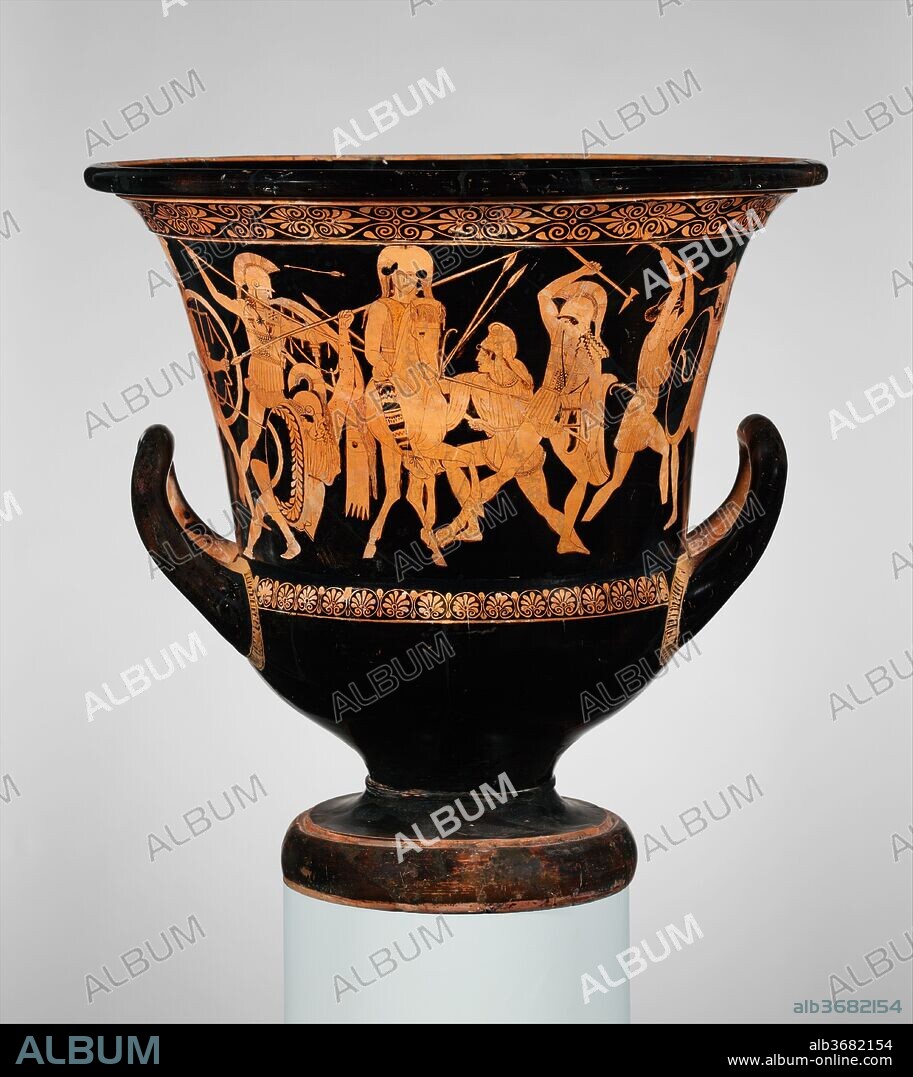alb3682154
Terracotta calyx-krater (bowl for mixing wine and water)

|
Add to another lightbox |
|
Add to another lightbox |



Buy this image.
Select the use:

Title:
Terracotta calyx-krater (bowl for mixing wine and water)
Caption:
Terracotta calyx-krater (bowl for mixing wine and water). Culture: Greek, Attic. Dimensions: H. 21 15/16 in. (55.8 cm)
diameter 22 15/16 in. (58.3 cm). Date: ca. 460-450 B.C..
Obverse and reverse, Amazonomachy (battle between Greeks and Amazons)
The number of figures and the complexity of poses here reflect an innovation that entered vase-painting about the middle of the fifth century B.C. and is generally attributed to the influence of monumental wall-painting. The frontal mounted Amazon in the middle of the composition, her falling comrade to the left, and the overlapping of figures, shields, and weapons dramatically convey the tumult of battle. At the same time, the many spatial planes strain the implicitly shallow stage provided by the black background of a vase. The fundamental incompatibility between naturalistic representation and the expressive possibilities offered by vase-painting led to the latter's demise--although that would come only at the end of the fourth century B.C. In the meantime, artists exploited every possibility to depict motion and emotion in the human figure.
Technique/material:
Terracotta; red-figure
Period:
classical
Museum:
Metropolitan Museum of Art, New York, USA
Credit:
Album / Metropolitan Museum of Art, NY
Releases:
Model: No - Property: No
Rights questions?
Rights questions?
Image size:
3572 x 4007 px | 40.9 MB
Print size:
30.2 x 33.9 cm | 11.9 x 13.4 in (300 dpi)
Keywords:
 Pinterest
Pinterest Twitter
Twitter Facebook
Facebook Copy link
Copy link Email
Email
